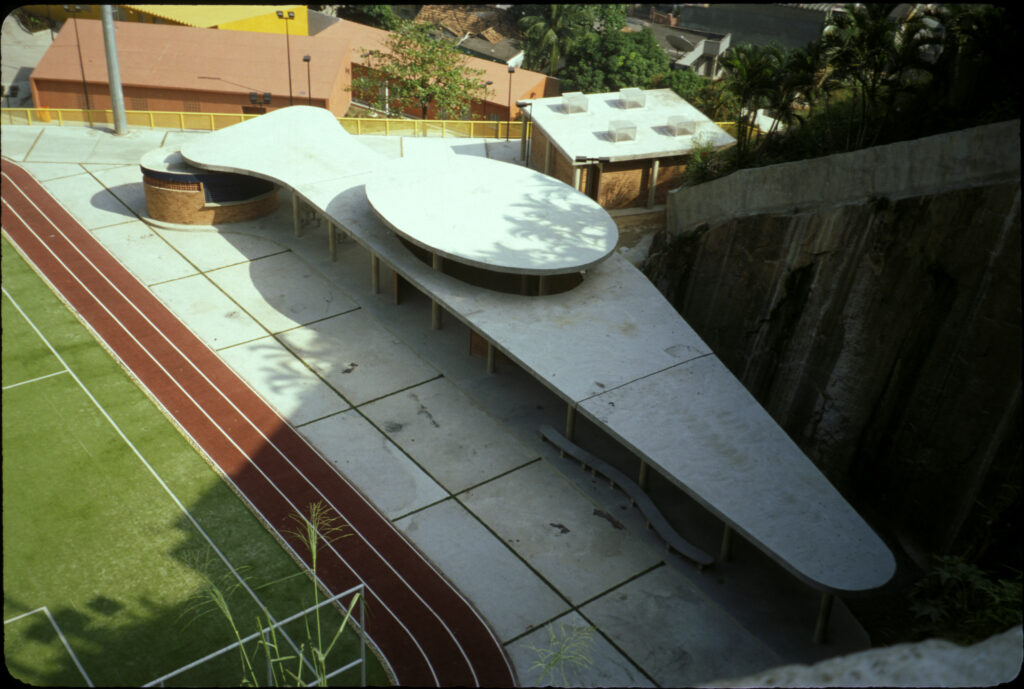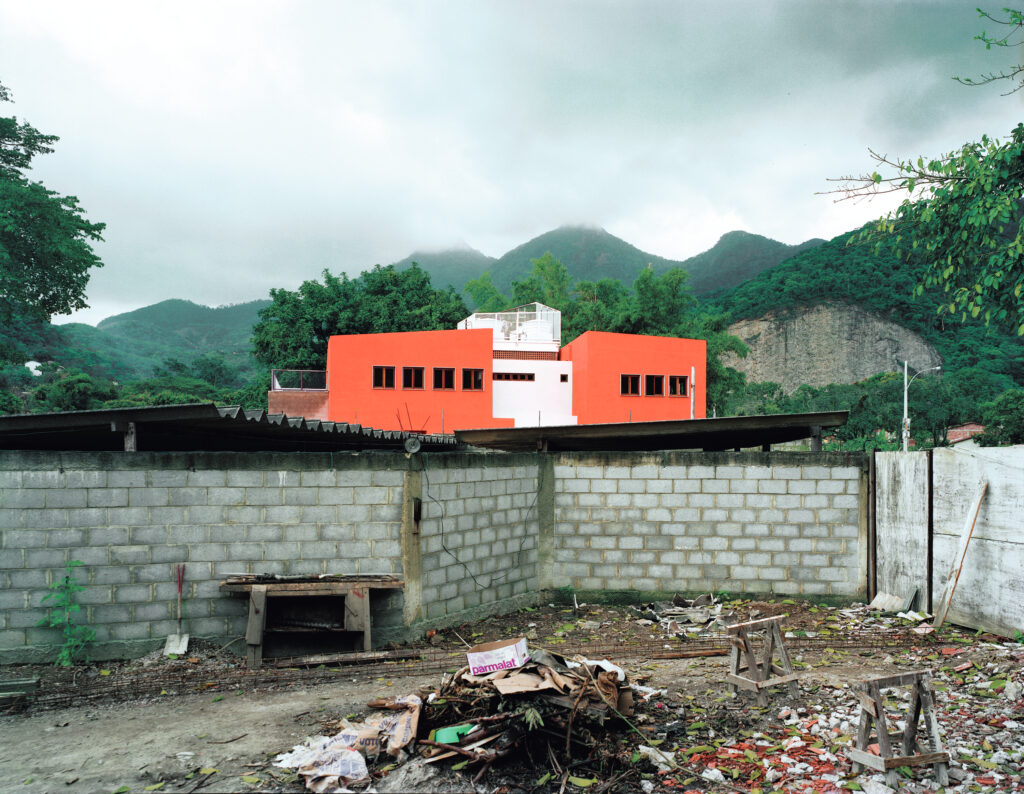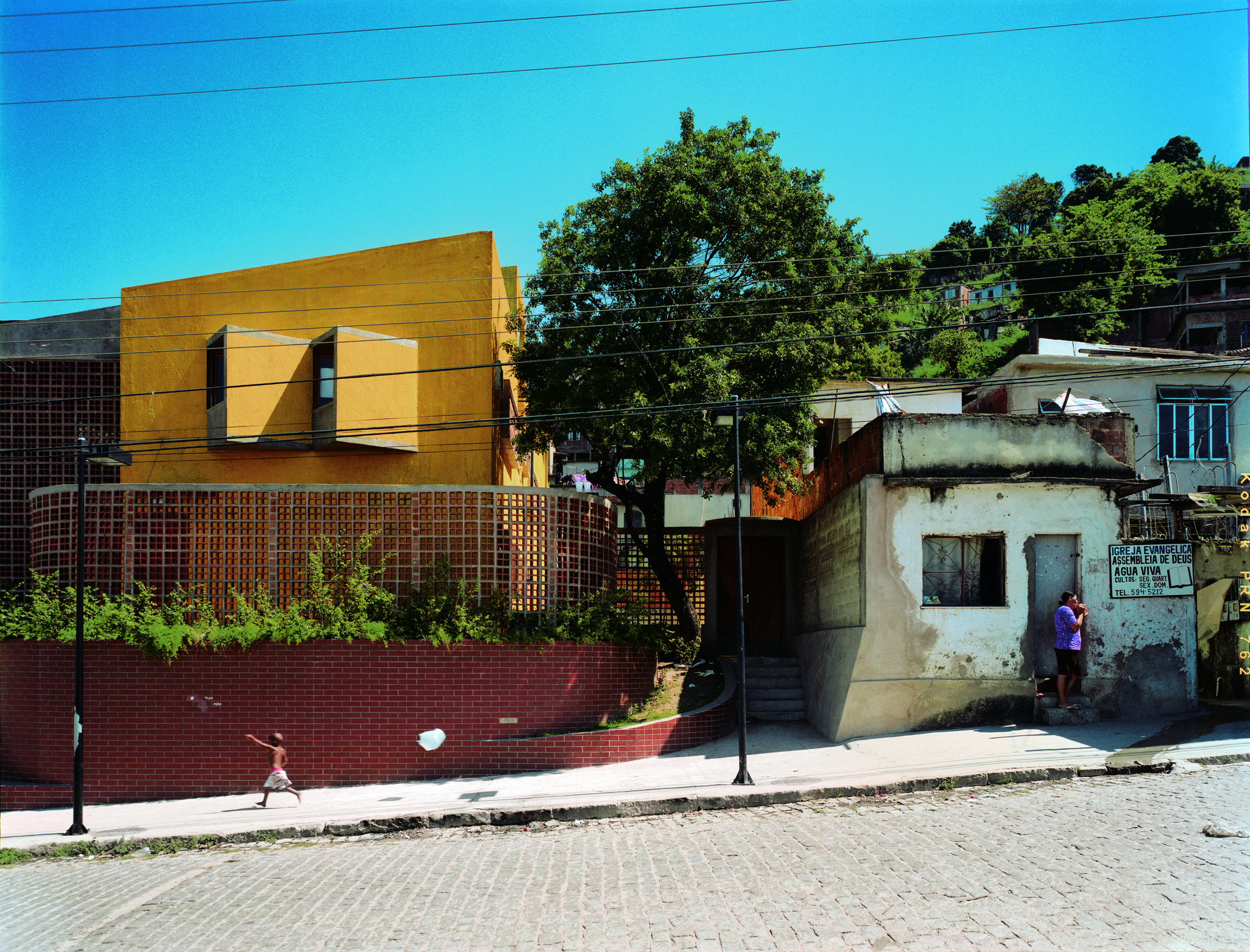

left image: Public square entrance, Fuba-Campinho | right image: New roadway and daycare center, Fuba-Campinho. © Jason Schmidt
| Date | 1994–present |
| Client | 168 favela communities |
| Location | Rio de Janeiro, Brazil |
| Design Firm | Jorge Mario Jáuregui Architects |
| Design Teams | Various |
| Major Funding | Inter-American Development Bank |
| Total Budget | $1 billion |
The favelas of Rio de Janeiro are unplanned, illegal shantytowns housing one-third of the city’s population.
Though favelas are typically seen on the fringes of a city, Rio’s unique topography of mountains and sea forced squatters to build within city limits. For over 100 years, simple makeshift houses climbed on top of one another up Rio’s steep surrounding hillsides.
Though the government long ignored the favelas, efforts were finally made in the mid-twentieth century to eradicate them and move occupants to public housing. These efforts met with strong opposition from residents, and the favelas survived, growing at a faster rate than the city itself. By the early 1990s the favelas had become dangerous clusters of substandard housing, lacking basic sanitation and reliable electricity, terrorized by drug lords, and disenfranchised from the greater community.
In the mid-’90s the city changed tack, launching the Favela-Bairro program, which engaged the community in a participatory design process with architects and other technical experts. Its goal was to upgrade existing favelas and integrate them with the larger city. The result was a wide range of proposals including the award-winning projects shown here by Jorge Mario Jáuregui Architects.

Soccer field and clubhouse, Fuba-Campinho. © Toshiko Mori
Since the program’s inception this firm has built projects in more than 10 favelas, including Fernao Cardim, Fuba-Campinho, Salgueiro, and Vidigal. Grafted into the heart of the favelas, the new structures, with their Carnival coloring and functional modernist design, signal the arrival of basic services and the favelas’ assimilation into the formal city.
Where tangles of wiring once snaked their way up the hillsides to informal shantytowns, new power lines have been buried and brightly colored stair rails mark the boundaries of newly formalized neighborhoods. In Fuba-Campinho, a gateway made from brick and steel I-beams brings order to the once-chaotic jumble of pathways and demarcates a new public square. In Vidigal, a semiabandoned sports center once overrun by drug dealers has been transformed into the official venue for Rio’s soccer championships. In other neighborhoods, daycare centers, communal laundries, and salsa halls stand shoulder to shoulder with makeshift housing and storefronts, as if to invite and encourage the community to embark on its own journey of self-improvement.
In many areas streets are being built for the first time, allowing police and sanitation departments critical access to once-inaccessible parts of the city. Where streets cannot be built, connecting pathways are being improved to overcome the constant erosion of the hilly topography. In some cases housing must be removed to accommodate the new infrastructure. Affected residents are offered money to relocate or a spot in new housing units. Most choose the latter.

New daycare center, Rio das Pedras. © Jason Schmidt
Since 1994 the Favela-Bairro Project has reached about 500,000 people in 168 of Rio’s marginal settlements, and the government plans to continue and extend the program. Each project is designed independently of the others, maintaining the unique characteristics of neighborhoods ranging in size from 850 to 12,000 families. To encourage dialogue the project requires architects and planners, including many students, to be present in the communities on a daily basis—an experience most say they find liberating.


New communal laundry, Vidigal. © Jason Schmidt
















READ OR LEAVE A COMMENT